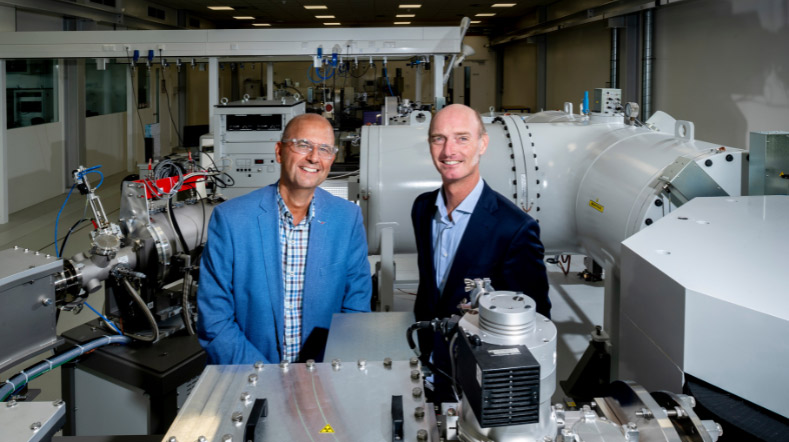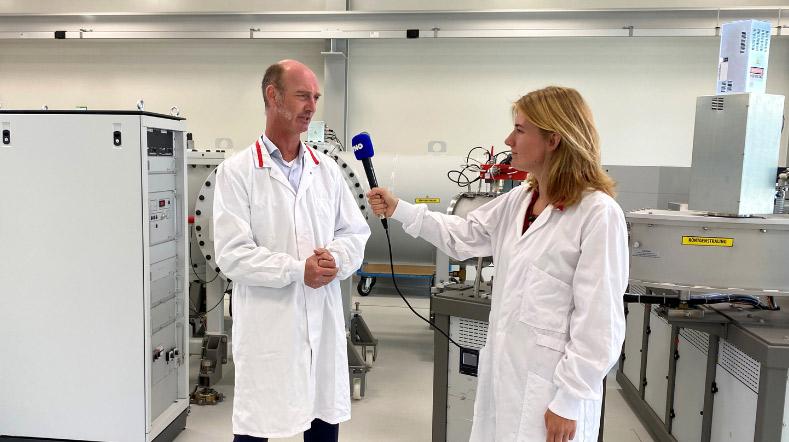
Highly translational preclinical ADME models
One of the biggest challenges in pharmaceutical development is ensuring that early-stage preclinical results translate accurately to later human trials. TNO is one of the only independent research and technology organisations in Europe to make preclinical in vitro and ex vivo tissue models available to drug developers and pharma companies, in order to enable faster, more accurate drug development. Our decades of experience in this domain ensure that critical ADME, safety, or efficacy data in the preclinical stage will translate to human clinical trials.
Clinical ADME services have been transferred to TNO's Spin off Peregrion launched, July 1st 2024. Peregrion is offering human ADME studies via microtracer AMS technology. TNO developed this microtracer AMS technology more than ten years ago.Our decades of experience in this domain ensure that critical ADME, safety, or efficacy data in the preclinical stage will translate to human clinical trials.
The right model for any question
No matter what question a drug developer has about its compound, TNO has the platform to test it in the preclinical phase. Our models represent tissue structure, organisation, functionalities, and genetic/age-dependent diversity, ensuring translatability to human clinical trials. Among the many tailor-made solutions we can offer, our key platforms for studying preclinical ADME include:
InTESTine™ (pdf) and Intestinal Explant Barrier Chip (IEBC) can be used to investigate intestinal absorption and metabolism, drug-drug or food-drug interactions, or secretion of satiety hormones and neurotransmitters after exposure to pharmaceutical agents, biological substances, and nutrients in the intestinal wall. These unique, physiologically relevant and medium-throughput systems can accommodate fresh, ex-vivo intestinal mucosal tissue of human or animal origin, so it closely resembles the in vivo situation. Besides studying processes that determine oral absorption across multiple and varied intestinal regions (duodenum to colon), the IEBC model can be applied to study the effects of compounds on gut health, inflammatory processes as well as interactions with the (specific) microbiota. Read more about microbial metabolite interaction.
Organ-on-a-Chip models better mimic complex organotypic functions and enables to study organ-organ interactions. By making use of human cells and/or tissue-based models, we can mimic phenotypic organ and disease-state conditions. Our liver-on-a-chip model focuses on disease state conditions (MASH/fibrosis). Our gut-on-a-chip model enables the study of donor-to-donor variation in intestinal absorption or to mimic populational variation, including microbiome diversity. Our robust biobank of stem-cell organoids contains samples from children as well as adults, enabling study beyond what is possible with ex vivo intestinal tissue.
TNO has implemented (sub)normothermic liver, kidney or combined liver-kidney perfusion to be applied as a preclinical ADME model. These models are expressly designed to predict pharmacokinetics behaviour of compounds in ways that in vitro liver or kidney models cannot, including hepatic extraction, biliary and renal excretion, metabolic clearance, and the effect of DDI on these processes. By using healthy porcine organs or discarded diseased human livers (during organ transplantation, for example, cirrhotic livers) the effect of disease status on ADME can be studied. Read more about explanted human liver model to assess hepatic extraction.
Many pharmaceutical companies use I-screen (pdf) to investigate potential metabolite formation by human colon microbiota, but the platform can also be applied to study the effect of compounds the microbiome composition or functioning. It employs physiological and anaerobic conditions to facilitate the culture of full-dense microbiota. Read more about the screening platform for microbiome-mediated drug metabolism, or how these type of models can applied in the development process.
The Competitive Partitioning to a Polymer Phase (ComP3) assay accurately measures the fraction unbound (fu) of (potentially) highly protein-binding and extremely hydrophobic compounds. The platform is based on a 96-well plate, easy-to-use, and applicable for upscaling to be applied as screening model for comparison of multiple APIs, species, and/or donor variation. It can be used to determine patient-specific plasma protein binding (or plasma/tissue partition coefficients for PBPK modelling) for hydrophobic small molecules, protein degraders, and hydrophobic peptides.
TNO has the capabilities and facilities to incorporate a 14C label to enable advanced and investigational animal studies. Our BSL-2 labs have a radioactive C-licence, which means that 14C-labelled GMO cell lines, viral particles, etc. could be easily produced in our laboratories simply by replacing cold nutrients (like glucose for DNA/RNA labelling, or amino acids for protein labelling) with 14C-labelled versions. Of course, our laboratories are equipped with an ACTA to purify a product to specifications after production.
We can then help conduct animal 14C-labelled ADME study and aid in the sensitive biodistribution and kinetic measurements of a labelled product in tissues/plasma using our state-of-the-art Low Level Liquid Scintillation counters or even our accelerator mass spectrometry facility.
Accelerate your preclinical study
No matter what questions you have about your novel compounds, TNO can offer the platforms and expertise to find the answers you seek. In addition to the models explained above, our extensive range of technology, tools, and insight can accelerate and streamline your preclinical drug development. From accurate ADME data to safety or efficacy information, TNO applies the right in vitro and ex vivo solutions to ensure acceleration.
Get inspired
TNO launches Peregrion to boost market impact of its technology that accelerates medicine development


PPP uncovers new insights into MASLD development


Translational preclinical efficacy models


Time setters: reduce long waits for new medication with AMS


Ex vivo organ perfusion provides accurate drug development data




